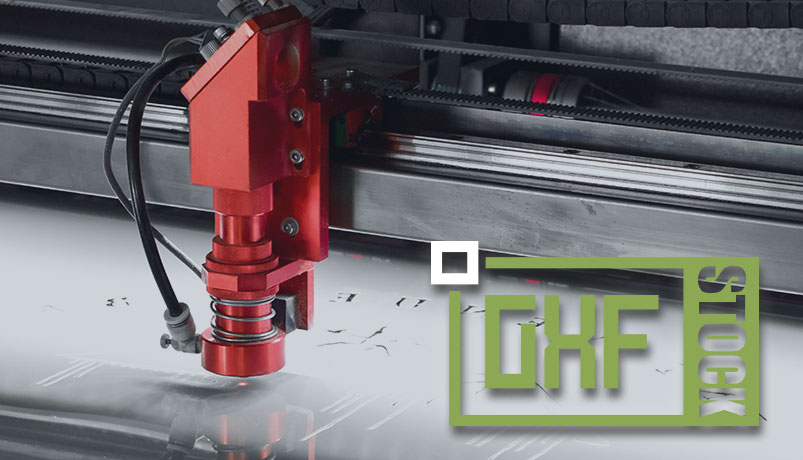CNC ARTS
CUTTING FILES FOR LASER MACHINES
Laser machines are becoming increasingly popular in a variety of industries. As a result, there is a growing demand for workers who know how to operate them.
One of the most important aspects of operating a laser machine is knowing how to properly cut files. In order to do this, workers must have a strong understanding of the machine’s capabilities and limitations. They must also be familiar with the types of materials that the machine can cut.
Cutting files for laser machines can be a daunting task for those who are not properly prepared. However, with a little bit of knowledge and practice, it can be easily mastered.
Cutting Files for Laser Machines
A cutting file is a file used by a computer-aided manufacturing (CAM) or computer-aided design (CAD) program toachine a particular material according to a specific design. Cutting files come in a variety of file formats, but the two most common are DXF and G-code.
When a CAM or CAD program is used to create a cutting file, the programmer inputs the dimensions of the material to be cut, as well as the dimensions and geometry of the object to be cut out of that material. The software then calculates the necessary path that the cutting tool must take in order to cut out the object. This path is generally a series of straight lines or arcs.
The cutting file contains the instructions for the cutting tool, telling it what direction to move in, how fast to move, and when to start and stop cutting. These instructions are generally encoded in a machine-readable language such as G-code or DXF.
Once the cutting file has been created, it can be sent to the cutting machine, which will interpret the instructions and cut the material accordingly. Cutting machines come in a variety of types, but the two most common are laser cutting machines and waterjet cutting machines.
Laser cutting machines use a laser to cut through the material. The laser is focused onto the material, and the heat from the laser melts or vaporizes the material, allowing the laser to cut through it.
Waterjet cutting machines use a high-pressure stream of water to cut through the material. The waterjet is focused onto the material, and the pressure from the waterjet cuts through the material.
The Different Types of Cutting Files
A cutting file is a digital file that is used to instruct a laser cutter on how to cut a physical object. There are a few different types of cutting files, each with their own advantages and disadvantages.
Raster files are the simplest type of cutting file, and are best suited for objects with simple shapes. Raster files are essentially just images, with each pixel representing a small area to be cut out. The main advantage of raster files is that they are very easy to create – simply draw the object in an image editing program and save it as a raster file. The downside of raster files is that they can only be used to cut objects with straight edges – curved edges will appear jagged. Vector files are a more complex type of cutting file, and are best suited for objects with more intricate shapes.
Vector files contain a series of instructions that tell the laser cutter how to move in order to cut the desired shape. These instructions are often in the form of mathematical equations. The advantage of vector files is that they can be used to cut objects with both straight and curved edges. The downside of vector files is that they can be more difficult to create, especially if the object to be cut is complex.
The type of cutting file that you use will depend on the type of object that you want to cut. If you are unsure, it is always best to start with a raster file, as they are the easiest to create.
The Different Uses for Cutting Files
Inexpensive laser machines have made cutting files a common tool for small businesses and hobbyists. There are many different uses for cutting files, from simple shapes to more complex designs.
One of the most common uses for cutting files is to create simple shapes. These can be used for a variety of purposes, such as making plaques or signs. They can also be used to create embellishments for scrapbook pages or cards.
More complex designs can be used to create three-dimensional objects. These can be used for a variety of applications, such as creating models or prototypes.
Cutting files can also be used to create negative space designs. These can be used to create cut-outs in other materials, such as paper or metal. This type of design is often used for decorations or to add an element of interest to a project.
Overall, cutting files provide a versatile way to create a variety of different designs. They can be used for simple or complex projects, and they offer a great deal of versatility.
How to Choose the Right Cutting File
Most laser machines on the market today can use a variety of different file types, but when it comes to cutting files, there are really only two that you need to worry about: vector and raster. Vector files are made up of lines and curves, and are typically used for cutting out shapes or text. Raster files, on the other hand, are made up of pixels, and are best suited for engraving images or patterns.
So, how do you choose the right cutting file for your project? Here are a few things to keep in mind :
– The type of material you’re cutting : Some materials, like paper or cardstock, are best cut with a vector file. Others, like wood or glass, can be cut with either a vector or raster file.
– The complexity of your design : If your design is relatively simple, a vector file will probably suffice. But if it’s more complex, you may need to use a raster file.
– The quality of your laser cutter : If you have a high-quality laser cutter, you’ll be able to cut more complex designs with a vector file. But if your laser cutter is of lower quality, you may need to use a raster file.
– Your personal preference : Ultimately, the decision of which file type to use is up to you. If you’re not sure which to use, experiment with both types of files to see which one gives you the best results.
How to Use Cutting Files
When it comes to using cutting files with a laser machine, there are a few things you need to keep in mind. First and foremost, you need to make sure that the file you’re using is compatible with the machine. Most machines will have specific requirements for the file type, size, and resolution.
Once you’ve found a file that is compatible with your machine, the next step is to prepare the file for cutting. This usually involves setting up the file in the machine’s software so that the laser knows where to cut. This can be a simple process, or it can be more complex depending on the design of the file.
Once the file is prepared, it’s time to start the cutting process. This is usually done by pushing a button or loading the file into the machine. The machine will then do the rest, following the instructions in the file.
The cutting process can take a few minutes or a few hours depending on the size and complexity of the file. Once it’s finished, you’ll be left with a finished product that’s ready to use.

